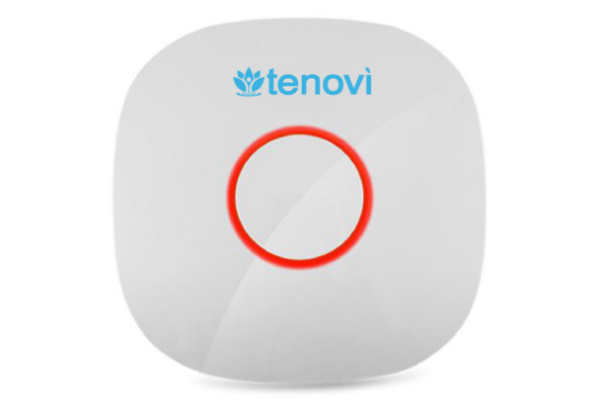Remote patient monitoring (RPM) provides consistent vital sign tracking and real-time data sharing between patients and healthcare providers. The Tenovi RPM Cellular Gateway connects multiple devices and aggregates health data in a seamlessly accessible and versatile way.
This article will explore the benefits of using an RPM cellular gateway, how it connects RPM devices, its capabilities, and how it transforms the chronic care healthcare landscape.
The RPM Cellular Gateway in Healthcare and Bluetooth Devices
One of the main features of RPM cellular gateway technology in healthcare is its versatility. Remote patient monitoring cellular gateway technology allows many Bluetooth-enabled medical devices to utilize cellular technology for data transfer at a lower cost than cellular-enabled RPM devices. This means that a wide range of remote patient monitoring devices, from blood pressure monitors to thermometers and activity-tracking smartwatches, can seamlessly integrate into the remote monitoring ecosystem, providing healthcare professionals with comprehensive patient data.
Tenovi, a company at the forefront of remote patient monitoring solutions, offers a suite of RPM devices that cater to various chronic and acute healthcare needs. These devices include a blood pressure monitor, scale, pulse oximeter, blood glucose meter, peak flow meter, and thermometer, all of which seamlessly connect to the Tenovi Cellular Gateway.
Tenovi also collaborates with healthcare device manufacturers like Transtek and Trividia Health to offer devices such as the Omron blood pressure monitor, Omron Wrist blood pressure monitor, Trividia blood glucose meter, and the TeleRPM cellular blood pressure monitor and cellular body scale. This allows telehealth, chronic care management, and remote patient monitoring software and services several choices to meet their client’s diverse needs.
The Benefits of Cellular-Connected RPM Devices
Cellular-connected RPM devices offer many benefits, both for healthcare providers and patients. The following section explores some of these advantages.
1. Enhanced Care Coordination
Cellular-connected RPM devices enable real-time data sharing between patients and their healthcare teams. Consequently, healthcare providers can remotely monitor their patients’ health conditions, keeping them updated on any changes in symptoms or vital signs between appointments.
2. Timely Medical Interventions
Secondly, RPM cellular-connected devices can alert healthcare providers if immediate medical intervention is necessary. As a result, this proactive approach can help prevent medical emergencies by addressing potential issues before they escalate.
3. Improved Patient Outcomes
Thirdly, RPM devices allow regular monitoring and data collection. In turn, healthcare providers can make data-driven decisions and tailor treatment plans based on patients’ real-time health data.
4. Reduced Healthcare Costs
Finally, RPM devices are crucial in lowering healthcare costs by reducing the risk of emergency room visits and hospitalizations. Patients receive timely care, which can prevent costly hospital stays.
Remote Patient Monitoring Adoption
Now that we have explored the advantages of cellular-connected RPM devices, we will discuss the landscape of remote patient monitoring adoption. The adoption of remote patient monitoring has been steadily increasing in recent years. According to data from a survey conducted by ACCC, several key findings shed light on the current state of RPM adoption in community cancer centers:
Adoption Status: Many healthcare programs are actively implementing or piloting RPM. For instance, 40% of healthcare programs reported that they were in the process of implementing or piloting RPM technology.
Future Considerations: RPM technology is on the radar for many healthcare programs. In addition, 28% of healthcare programs indicated that they were considering or planning to implement RPM in the near future, highlighting the growing interest in this technology.
Challenges to Adoption: However, it’s important to note that some healthcare programs are not considering RPM adoption now. To emphasize this point, twenty-eight percent of healthcare programs responded that they were not considering the adoption of RPM technology. This underscores the need for further education and awareness about the benefits of RPM.
Key Points: Understanding Cellular-Connected RPM Devices
Remote patient monitoring transforms healthcare delivery by offering real-time health monitoring and data sharing. Furthermore, Tenovi and other innovative companies are spearheading this technological revolution, providing a diverse range of devices to meet the unique needs of patients and healthcare providers.
As RPM adoption continues to grow, patients and providers must be educated about the benefits and possibilities of this technology. By harnessing the power of remote patient monitoring, healthcare can become more proactive, efficient, and patient-centered, ultimately leading to better outcomes and reduced healthcare costs. The increasing adoption of RPM is a promising sign that the future of healthcare is becoming more connected and patient-centric.
Whether your healthcare partners are interested in adopting remote patient monitoring to increase patient engagement, create a more efficient workflow, or increase revenue, Tenovi can help you find the best remote patient monitoring solution. Book a free demo today.


